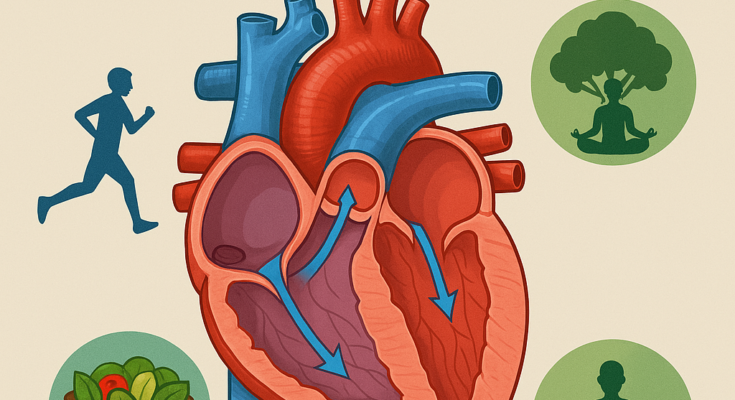The Heart: Your Body’s Tireless Engine and How to Keep It Thriving
The heart isn’t just an organ—it’s a relentless, rhythmic marvel that powers every breath, movement, and thought. Nestled in your chest, this fist-sized dynamo works 24/7, pumping over 2,000 gallons of blood daily to fuel your body’s every cell. Let’s dive into its anatomy, uncover its secrets, and explore how to safeguard this lifeline for years to come.
Anatomy of the Heart: A Masterpiece of Design
Location and Structure
Tucked between the lungs and slightly tilted to the left, the heart resembles an upside-down pyramid. Protected by the ribcage, it’s wrapped in three sophisticated layers:
- Pericardium: A protective sac shielding it from friction and infection.
- Myocardium: The muscular middle layer responsible for powerful contractions.
- Endocardium: A smooth inner lining that ensures blood flows effortlessly through its chambers.
Chambers and Valves: The Heart’s Inner Symphony
Four chambers work in perfect harmony:
- Atria (upper chambers): The right atrium receives oxygen-poor blood from the body; the left atrium welcomes oxygen-rich blood from the lungs.
- Ventricles (lower chambers): The right ventricle sends blood to the lungs for oxygen, while the left ventricle propels fresh blood to every corner of your body.
Four valves—tricuspid, mitral, pulmonary, and aortic—act as gatekeepers, ensuring blood flows in one direction. Picture them as synchronized dancers, never missing a beat.
How the Heart Works: More Than Just a Pump
The Double Circulation System
- Pulmonary Circuit: Deoxygenated blood travels from the right ventricle to the lungs, swapping carbon dioxide for oxygen.
- Systemic Circuit: Oxygen-rich blood surges from the left ventricle through arteries, delivering life-sustaining nutrients to cells.
The Heart’s Electrical Pulse
A natural pacemaker, the sinoatrial (SA) node, sparks electrical signals that cascade through the heart, creating its signature rhythm. This “electric symphony” ensures atria and ventricles contract in flawless unison—about 60–100 times a minute at rest.
Why Your Heart is Your Body’s MVP
- Oxygen Delivery: Every cell relies on the heart’s blood supply to generate energy.
- Waste Removal: Blood whisks away toxins, directing them to the kidneys and liver for disposal.
- Temperature Control: By adjusting blood flow, the heart helps maintain your body’s ideal temperature.
When the Heart Stumbles: Common Challenges
Even this resilient organ isn’t invincible. Key threats include:
- Coronary Artery Disease: Plaque buildup narrows arteries, starving the heart of oxygen.
- Heart Failure: The heart struggles to pump efficiently, causing fluid retention and fatigue.
- Arrhythmias: Irregular beats, like atrial fibrillation, disrupt the heart’s rhythm.
- Myocarditis: Inflammation from infections can weaken heart muscle.
Early detection is critical. Tools like ECGs, echocardiograms, and cardiac MRIs help diagnose issues before they escalate.
5 Steps to a Healthier Heart
- Eat Smart: Load up on leafy greens, berries, and whole grains. Swap saturated fats for omega-3-rich fish like salmon.
- Move Daily: Aim for 150 minutes of brisk walking or cycling weekly to boost circulation and lower blood pressure.
- Ditch Smoking: Tobacco damages blood vessels—quitting slashes heart disease risk by 50% within a year.
- Manage Stress: Chronic stress spikes cortisol; try meditation, yoga, or even gardening to stay calm.
- Check-Ups: Regular blood pressure, cholesterol, and diabetes screenings catch problems early.
The Bigger Picture: Heart Health as a Global Priority
Cardiovascular diseases claim 18 million lives yearly—but many are preventable. By prioritizing education, affordable healthcare, and lifestyle changes, we can turn the tide. Your heart isn’t just your responsibility; it’s a collective mission for healthier communities.


